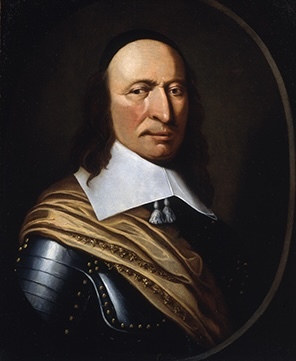Deciphering the meaning behind a 1918 Financial District subway mosaic
If the walls of the Whitehall Street/South Ferry subway station were a little less grimy, it would be easier to see the terra cotta image decorating the walls across from the platform.

Surrounded by colorful tiles is a house: a three-story, colonial-style residence with dormer windows projecting out of the gambrel roof. Ships sail on the body of water behind the home, which has views of hilly land beyond the water.
It’s a lovely bucolic scene, a pretty and pristine vision of pre-Revolutionary War Manhattan. But whose house is it, and why are the walls of the subway station decorated with this image?

Whitehall Street takes its name from The Whitehall—the grand white stone home built in 1655 (or 1658, according to some sources) by New Netherland’s legendary director-general, Peter Stuyvesant.
From this governor’s mansion that jutted out on a small peninsula at State Street and the Battery, Stuyvesant presided over the colony and its budding, unruly island outpost, New Amsterdam.

New Amsterdam was established in 1625, and at the time The Whitehall was completed, Stuyvesant (at right) was several years into his 17-year reign. That ended when the British ousted the Dutch in 1664, renaming the outpost New York.
After being displaced by the British, Stuyvesant spent the rest of his life at his 62-acre bouwerie, a few miles north of his former mansion in today’s East Village. According to several sources, it was the British who nicknamed the mansion Whitehall after the Whitehall section of London, the seat of the UK government.
With the British in charge, the mansion eventually fell into the hands of the English-appointed New York governor Thomas Dongan and for a short time became the province’s custom house, according to the 1899 book Historic New York.

More than 200 years later, the street gave the subway station its name. The designers of this station, which opened in 1918, apparently thought that an image of Stuyvesant’s Whitehall would pay homage to New York’s historical beginnings.
The terra cotta image as history lesson is one of many still in existence in various subway stations. The beavers at the Astor Place stop, for example, are a nod to John Jacob Astor’s dominance in the beaver fur trade, while the sailing ships at the Columbus Circle station harken back to the ships that brought Columbus to the New World.

It’s always a treat to come across them, especially with the subway system in disarray these days. Interestingly, mosaics like these weren’t just decorative—reportedly they helped illiterate or non-English speaking New Yorkers get around underground.
[Second image: Palisades Interstate Park Commission via New York Heritage; third image: Wikipedia; fourth image: NYPL Digital Collections]



